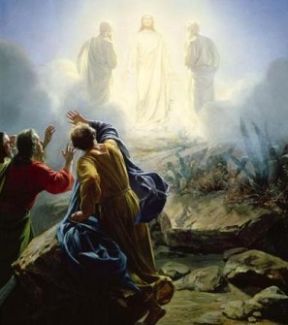
I remember going to the store to get a bottle of ketchup. I thought this would be a simple task until I saw how many varieties I had to choose from. There were differences in price, container shapes, and maybe ingredients, but the contents were probably the same. I don’t remember what I bought, probably the cheapest one.
When a person “goes shopping” for an answer to life, they see, like I did at the grocery store, a variety of choices. There are religions, philosophies,and today especially, political causes. Needing an answer to the deep hunger of their minds and hearts, people “grab onto” something–maybe what is cheapest, easiest, or most popular. Are the contents of these solutions, like ketchup, basically all the same?
An interesting choice that is talked about today is the “Nones”—the non-committal belief. Confused by the choices on the shelf and not being attracted to any of these in particular, the “Nones” opted to belief in “non-belief.” They prefer to float around with the question rather than latch onto anything.
St. Peter, the rock on whom Jesus built his Church, wrote to the early Christians. He was aware of the “alternatives” to Christianity that were being presented to tehm. He was aware that some had given up their faith in favor of an alternative belief (2 Peter 1:16-19). He wrote:
“We did not follow cleverly devised myths when we made known to you the power and coming of the Lord Jesus Christ, but we had been eyewitnesses of his majesty. For he had received honor and glory from God the Father when that unique declaration came to him from the majestic glory, ‘This is my Son, my beloved, with whom I am well pleased.’”
Peter was referring to his experience of the Transfiguration of Jesus. They had seen what no other human had—a glimpse into the glory of heaven and the glorified Jesus. This moment was so stunning and so beyond all other experiences, even the miracles of Jesus, that it made an imprint that never left them.
“We ourselves heard this voice come from heaven when we were with him on the holy mountain.”
When we read the Transfiguration accounts, we learn that Peter, James, and John came under a cloud and heard the voice of God Himself speak to them, confirming that Jesus was his chosen Son, and that they were to listen to him and him alone.
No “cleverly devised myth” stands up to the reality of Jesus, especially when he was manifested in his glorified form. No myth has been validated by the voice of God himself.
Our Christian faith is not just another life solution sitting on the same “shelf” as “cleverly devised myths.” It, alone, is the answer to life because it is built on the One who is “the way, the truth, and the life.”
We live in an age in which “media power” prevails. Almost anyone who has an idea and wants a following can win “converts” by investing enough money and time in a “cleverly devised” marketing plan. They find ways to make even the craziest ideas seem plausible to a gullible people—especially to the young.
Today, the feast of the Transfiguration of the Lord, is an emphatic reminder to us where our faith comes from. As the world tugs us here and there, let us cling tenaciously to the one truth who was manifest to Peter and others in his glorious form.
“This is my Beloved Son, with whom I am well pleased; listen to him” (Matthew 17:5).
